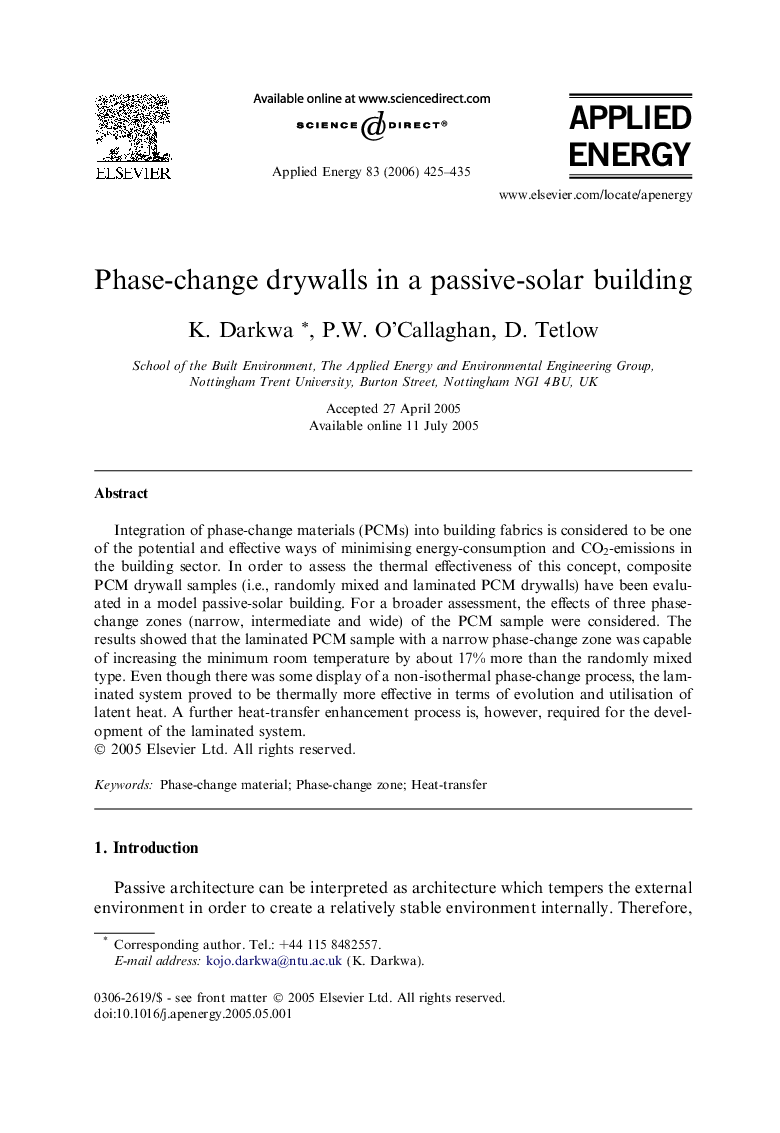| Article ID | Journal | Published Year | Pages | File Type |
|---|---|---|---|---|
| 245459 | Applied Energy | 2006 | 11 Pages |
Integration of phase-change materials (PCMs) into building fabrics is considered to be one of the potential and effective ways of minimising energy-consumption and CO2-emissions in the building sector. In order to assess the thermal effectiveness of this concept, composite PCM drywall samples (i.e., randomly mixed and laminated PCM drywalls) have been evaluated in a model passive-solar building. For a broader assessment, the effects of three phase-change zones (narrow, intermediate and wide) of the PCM sample were considered. The results showed that the laminated PCM sample with a narrow phase-change zone was capable of increasing the minimum room temperature by about 17% more than the randomly mixed type. Even though there was some display of a non-isothermal phase-change process, the laminated system proved to be thermally more effective in terms of evolution and utilisation of latent heat. A further heat-transfer enhancement process is, however, required for the development of the laminated system.
